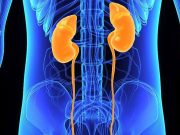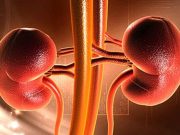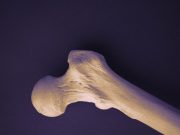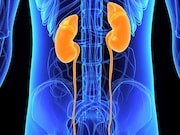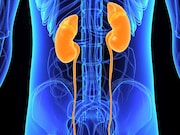Tag: Kidney Stones
Adjunctive Acupuncture May Speed Relief From Pain of Renal Colic
Response rates higher for acupuncture versus sham acupuncture at zero, five, 10, 15, 20, and 30 minutes, but not at 45 and 60 minutes
SuperPulsed Thulium Fiber Laser Beneficial for Pediatric Urolithiasis
SPTF associated with higher stone-free rate compared with Ho:YAG with no increase in operative time, complications
Burst Wave Lithotripsy Promising for Breaking Up Kidney Stones
Median of 90 percent comminution of total stone volume observed in the first 19 humans undergoing burst wave lithotripsy
Risk for Kidney Stones Increased During, After Pregnancy
Risk increased during second and third trimesters; peak in risk found at zero to three months after delivery, followed by decrease in risk
Bone Density Testing Low in Veterans With Kidney Stone Disease
23.6 percent of those with kidney stone disease have prevalent diagnosis of osteoporosis or fracture
CT Use to Evaluate Suspected Urolithiasis Significantly Increased
2006 to 2014 saw more than doubling in the use of CTAP in the ED, with considerable geographic variation
Predictors of Kidney Stone Recurrence Identified
Risk for recurrence within 5 years varies with risk factors, past episodes, time since last episode
Kidney Stones Tied to Increased Renal Cell Carcinoma Risk
Risk increased for papillary RCC but not clear-cell RCC; risk for upper tract urothelial carcinoma increased
Tamsulosin Does Not Appear to Promote Urinary Stone Passage
Findings do not support tamsulosin treatment for symptomatic urinary stones <9 mm
Higher Visceral Fat Ratio Seen With Recurring Urolithiasis
No differences seen with other fat volume measures between recurring, first-time stones




